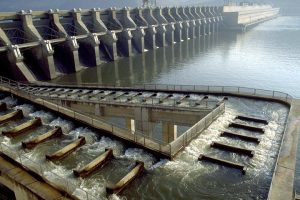 Several years ago, the Department of Energy (DOE) issued a report on the energy potential of the thousands of non-powered dams in the US. With a significant number of untapped sources readily available, it makes sense to consider how we can utilize more of this emissions-free resource by “unleashing hydropower”.
Several years ago, the Department of Energy (DOE) issued a report on the energy potential of the thousands of non-powered dams in the US. With a significant number of untapped sources readily available, it makes sense to consider how we can utilize more of this emissions-free resource by “unleashing hydropower”.
Many companies have attempted to shepard one of the more than 80,000 non-powered dams through the hydropower licensing process at the Federal Energy Regulatory Commission (FERC) only to find that unanticipated obstacles can arise like the requirement for fish passage. Often, FERC imposes a condition on the issuance of a hydropower license that requires the licensee to construct a fish ladder or similar system which can add millions to the project’s bottom line. And failure to comply with FERC’s condition for a fish ladder can have serious consequences like revocation of a license to operate as a hydropower generator.
As times change however, innovators develop creative solutions to address otherwise onerous federal licensing requirements. Since there are new technologies available that serve as an alternative to fish ladders, it would seem natural for project developers to consider implementing these mechanisms if they can reduce a project’s costs and satisfy FERC’s licensing requirements.
In fact, licensed dams currently generating electricity could create 5-10% more production by using an alternative to a fish ladder because new technology would allow a greater volume of water to ultimately flow through the turbines. And if one were to view the approximately 2500 existing power-producing dams as primary source of energy for the country, it becomes hard to ignore a method that could allow generators to squeeze out an additional 5-10% more electricity production.
As with many industries, however, the pace of government in acknowledging improved practices lags behind new technology and we are missing out on both clean energy and environmental benefits. While the DOE seems progressive in seeking unique ways to add clean power to the grid, various other federal regulatory agencies, each of which have their own mission, must all be similarly progressive in embracing and supporting innovation.
This is an area that I have worked on extensively with a small group of senior power engineers and many of the sources from existing non-powered dams even if provided… Read more »